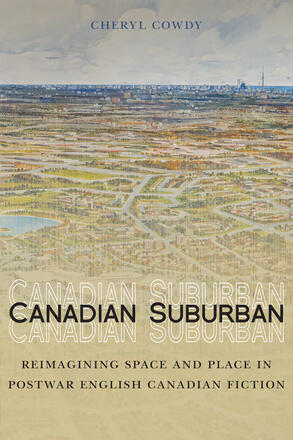
Canadian Suburban
Reimagining Space and Place in Postwar English Canadian Fiction
Suburbia as a literary and cultural landscape in Canadian fiction.
Description
Though a large proportion of Canadians live in suburban communities, the Canadian cultural imaginary is filled with other landscapes. The wilderness, the prairie, cityscapes, and small towns are the settings by which we define our nation, rather than the strip mall, the single-family home, and the developing subdivision, which for many are ubiquitous features of everyday life.
Canadian Suburban considers the cultures of suburbia as they are articulated in English Canadian fiction published from the 1960s to the present. Cheryl Cowdy begins her excursion through novels set between 1945 and 1970, the heyday of modern suburban development, with works by canonical authors such as Margaret Laurence, Richard B. Wright, Margaret Atwood, and Barbara Gowdy. Her investigation then turns to the meaning of the suburbs within fiction set after the 1970s, when a more corporate model of suburbanization prevailed, and ends with an investigation of how writers from immigrant and racialized communities are radically transforming the suburban imaginary. Cowdy argues there is no one authentic suburban imaginary but multiple, at times contradictory, representations that disrupt prevalent assumptions about suburban homogeneity.
Canadian Suburban provides a foundation for understanding the literary history of suburbia and a refreshing reassessment of the role of space and place in Canadian culture and identity.
Reviews
“A compelling account of Canadian writers' resistance to the suburbs that flourished after WW II.” Choice
“Canadian Suburban makes a significant contribution to recent scholarship on often-denigrated but complex urban peripheries, arguing for the role of the humanities in the field of suburban studies. Clearly written and highly readable, this book will be of interest to scholars in any discipline who work on the built environment, as well as literary studies and Canadian studies. The suburbs, which compose such a large proportion of the constructed environment, appear to be entering scholarly and popular discourses with increasing frequency. Like other parts of the city, the suburbs are undergoing continuous change, not only in their physical fabric but also in how they are experienced and understood.” H-Environment